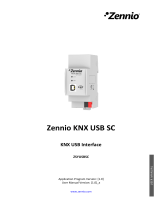CONTENTS
Contents ................................................................................................................................... 2
1 Introduction ...................................................................................................................... 4
1.1 Z70 v2 ........................................................................................................................ 4
1.2 Functionality .............................................................................................................. 6
1.3 Installation ................................................................................................................ 8
1.4 Start-up and power loss ............................................................................................. 9
1.4.1 EULA ......................................................................................................................... 9
2 Configuration .................................................................................................................. 10
2.1 General.................................................................................................................... 10
2.1.1 Configuración ......................................................................................................... 10
2.1.2 Locale ..................................................................................................................... 15
2.1.3 Backlight ................................................................................................................. 18
2.1.4 Security .................................................................................................................. 18
2.1.5 Internal Temperture Sensor .................................................................................... 21
2.1.6 Ambient Luminosity Sensor .................................................................................... 21
2.1.7 Touch Locking ......................................................................................................... 22
2.1.8 Sounds ................................................................................................................... 23
2.1.9 Update Setting........................................................................................................ 24
2.1.10 IP Configuration .................................................................................................... 30
2.1.11 VoIP Calls (License required) ................................................................................. 32
2.1.12 Avanced................................................................................................................ 42
2.2 Display ..................................................................................................................... 49
2.2.1 Pages ...................................................................................................................... 49
2.2.2 Controls .................................................................................................................. 63
2.3 Inputs ...................................................................................................................... 98
2.3.1 Configuration.......................................................................................................... 98
2.3.2 Binary Input ............................................................................................................ 98
2.3.3 Temperature Probe ................................................................................................ 98
2.3.4 Motion Detector ..................................................................................................... 98
2.4 Thermostat n ........................................................................................................... 99





























